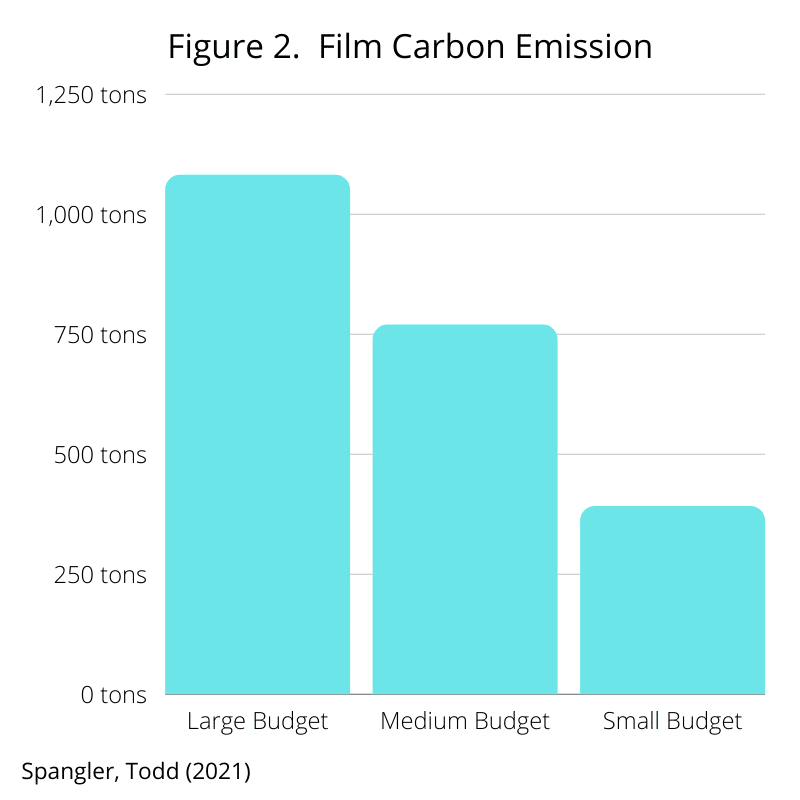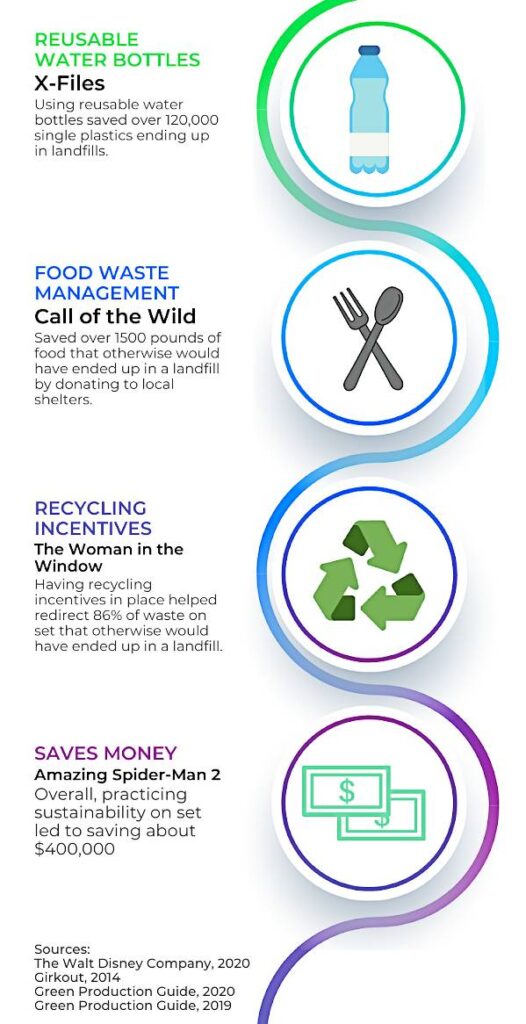The British Columbia film industry, a key production hub for Hollywood entertainment, is under pressure to shift away from diesel generators to power film and food trucks on local sets.
According to reports, the use of diesel generators is a main source of carbon emissions. This makes Vancouver’s film sets a significant contributor to air pollution.
Suggestions for a change include using mobile power alternatives such as sourcing energy directly from the local grid. This works both for film and TV sets in British Columbia for producing original content for large studios and streamers.
Carbon Footprint of the Entertainment Industry
Sustainability is crucial to every industry and the film industry is no exception, facing growing scrutiny for its environmental impact.
According to the Sustainable Production Alliance (SPA), each film production emits around 3,370 metric tons (Mt) of CO2 or about 33 Mt for each shooting day. This figure is equivalent to over 7 million miles driven by a car. That applies to production with an average budget of $70 million, while smaller films emit about 400 Mt.
SPA is a group of film, TV and streaming companies committed to making the entertainment industry more sustainable. The consortium members include Amazon Studios, Disney, Fox Corp., NBCUniversal, Netflix, Sony Pictures, and WarnerMedia.
The group’s report considers various factors contributing to the production’s carbon emissions, including flights, housing, fuel and utilities. The largest contributor for all film sizes is fuel used by vehicles and power generators.
Their data covers industry wide production carbon emissions averages for the SPA member companies over three years. A more recent report included a May 2023 report on Clean Power Alternatives for the Film Industry for Metro Vancouver.

For a TV series, a 1-hour scripted dramas emitted 77 Mt of CO2 per episode while a half-hour scripted single-camera show released 26 Mt. Unscripted series generated a smaller CO2 footprint per episode, 13 Mt.
- The SPA’s recent report in July 2022 covered more than 300 films and TV productions in the U.S. and over 60 productions in Canada.
As per the report, the 6 largest films shot in Vancouver produced over 1,400 Mt of CO2. Over in Atlanta, medium-sized movies emitted a little above 970 Mt of CO2.
Cleaner Energy Options for Lower Emissions
The difference in total carbon emissions between the two locations is the energy used in Georgia, which comes from dirtier sources (e.g. coal and natural gas).
In Vancouver, producers can reduce their pollution by tapping into cleaner energy sources for local films and TV shows. These include the use of zero-emission battery power and local electricity grids.
However, compared to other North American filming locations, fuel use in British Columbia remains proportionally higher. That’s primarily because of the big sizes and number of power generators used in sets as well as at soundstages.
Apart from spewing air pollutants, diesel generators also pose health risks, prompting calls for more sustainable and planet-friendly practices.
Some productions turned to using solar energy to power generators and banning single-use plastics on sets. Other film and TV studios are adopting other ways to reduce their emissions and the entire industry’s carbon footprint.
A Call for a More Sustainable Filming
In the B.C. film industry, major studios and streamers are encouraged to ramp up transition to cleaner energy sources. Similar trends are seen in Ontario where Hollywood post-strikes called for sustainable film productions as default on sets and soundstages.
Hollywood and other producers are also pushing for a more sustainable entertainment industry.
For instance, the streaming giant, Netflix, pledged to reduce carbon emissions by 45% below 2019 levels by 2030. The company’s approach to net zero involves three R’s: Reduce, Retain and Remove.
Disney aims for a net zero emissions for its direct operations by 2030 which involves investing in natural climate solutions.
On the other hand, Sony committed to eliminate its environmental footprint by 2050 while NBCUniversal aims to achieve carbon neutrality by 2035.
As for individual initiatives in greening the industry, producers and streamers use fully recyclable sets using waste materials. This helps avoid traditional materials (timber, plywood, fiberboards, etc.) from going to landfills.
Other large studios partner with green organizations such as Earth Angel and The Green Production Guide. These organizations helped studios learn and adopt sustainable filming practices. Example of these sustainability efforts from various movie productions include the following:

By transitioning away from diesel generators and embracing cleaner energy options, the entertainment industry is demonstrating a commitment to reducing its carbon footprint and promoting sustainable filming practices. With a concerted effort from major studios, streamers, and industry organizations, the move towards sustainability in film production sets a precedent for the industry as a whole.

